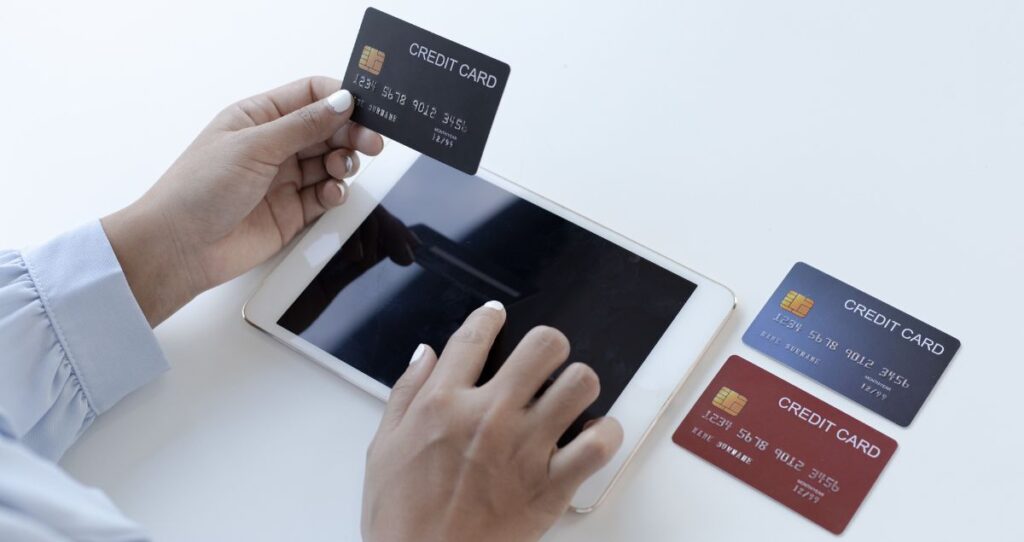There are many different types of credit cards that serve different purposes. By choosing the right credit card, you will be able to maximize all the features and benefits that come with credit cards. Choosing the wrong credit card, however, can mark the beginning of a lifetime financial struggle. Learn how to pick the right credit card and avoid common credit card mistakes that millions of people make.
The best use of credit cards starts by picking the right card for the right reason. No matter how careful you are as a credit card user, any credit card mistakes you make when choosing a credit card can make it difficult to properly take advantage of your accounts.
This article will go over some of the common credit card mistakes people make when choosing their credit cards and how to avoid them.
Without further ado, let’s get started.
1. Not shopping for a lower interest rate
Credit cards come with some of the highest interest rates, fees, and charges in a form of annual percentage rates (APR). According to LendingTree, the average APR on all credit card accounts was 16.27% in the third quarter of 2022 while the average APR for accounts with accruing interest was 18.43% in the same time span. People with lower credit scores pay even higher APRs when getting new credit cards.
One of the biggest credit card mistakes people make is to pick credit cards without comparing APRs. Even if you are not planning to carry balances on your credit card, you should always go for a credit card with a lower APR.
It is obvious that rates are higher for credit cards by default. But, that does not mean you should pick a random card without comparing rates. You can still find a lower rate on your credit card if you do a little bit of shopping. Just like any other credit account such as mortgages, car loans, or personal loans, the interest you pay become free money to the business. That is how lending institutions stay in business. The interest rate is the cost of borrowing and you should minimize that cost as much as you can. When choosing a credit card, pick a card that has a lower APR.
Related: How to get a credit card?
2. Choosing a credit card with annual fees
Some credit cards come with annual fees on top of all fees and interest you pay. These credit cards are usually the ones that offer competitive features and benefits. To offset these costs, credit card issuers apply annual fees to these credit cards. The fees you pay for these credit cards, however, increase the cost of using them.
When picking a credit card, make sure that you avoid credit cards with annual fees. The only reason you need a credit card is to lower some of your expenses, build a credit history, and have available credit when needed. There is no other function of credit cards. The good news is that you can achieve all these benefits by using credit cards without annual fees.
3. Choosing the wrong credit card
Before you pick a credit card, you need to know the reason you are looking for a credit card. You can’t just apply for any credit card. Knowing why you need a credit card will help you narrow down the search and pick the right credit card.
For example, if you want to save money on grocery bills, gas, and restaurants, you’ll need to look for rewards credit cards. Cash-back credit cards or point cards should be a good option for you. You can also get a store credit card if you are planning to shop at one place for a while. This will maximize your rewards and save you a lot of money over the long term.
This means that a person who wants to save money on groceries should not spend any second on travel credit cards. Although you could save money on travel-related expenses such as food, hotels, airfare, etc, this card will not benefit you much. This is because your main goal is to save money on your daily shopping which has nothing to do with traveling.
4. Applying for a credit card without enough rewards
Besides building a credit history and boosting your credit score, credit cards can save you money. If you must buy something such as food, why can’t you pay less to buy the same products? That is where credit cards come in. Credit cards come with a lot of features and benefits. The most common ones are rewards in a form of miles, points, or cash back.
For every purchase you make, you earn some form of return or discount. If you have a cash-back credit card, for example, you can earn 5% cash back for every qualifying purchase you make up to a particular dollar amount. Some credit card issuers give you a flat rate on all purchases. By using a credit card on things you need, you get to own them at lower prices.
One of the common credit card mistakes people make when choosing a credit card is to get a random card without comparing rewards. For example, people accept a 2% cash-back card when they can easily qualify for one that gives them 5% cash-back. The best way to get the right credit card is to narrow your search to a particular category and compare the risks and rewards of each credit card. That is how you find a card that maximizes your rewards and benefits with minimal risks.
5. Not considering the balance transfer fees
The balance transfer is the process of transferring your balance from one credit card to another. This process comes with a fee that varies from one card and lender to another. With a balance transfer, you might end up with a lower interest rate which can help you pay off your credit card debts. The new card can also come with better features and benefits.
The fees you pay for the balance transfer range from 3% to 5% of the balance you are transferring. Before you pick any balance transfer credit card, make sure you pay attention to these fees. They can easily add up to a large sum.
6. Underestimating the cash-advance fees
Have you swiped your credit card and the merchant asked you if you wanted cashback? If you selected yes and got cashback, you completed the cash advance process. This fancy term”cash advance” simply means withdrawing cash from your credit card. Whether you withdraw cash from your credit card at an ATM, store, or bank, they are all the same. A cash advance transaction is not a good use of your credit card.
No matter what credit card you are choosing, you should never sign your papers without understanding the true cost of cash advance on your credit card. Also, you should avoid cash advances as much as you can. This is because cash advance is one of the costliest transactions you will have on your credit card.
The cash advance fees usually range between 3 to 5 percent of the amount you are requesting. In addition, the cash advance APR ranges from 17.99% to 29.99% APR. Credit card issuers often limit the amount you can request on your credit card. A large withdrawal on your credit card can automatically use up most of your credit limit which might be harder to pay it off. You will often qualify for a few hundred dollars at a time for a cash advance. But, due to the fees, charges, and higher cash advance APR, it is a good idea to not consider this option.
7. Choosing a card with a low sign-up bonus
Did you know that most credit card issuers give you a sign-up bonus? If you are choosing a credit card, make sure that you choose a credit card with a higher sign-up bonus. It is free money and you should maximize it as much as you can.
You can also earn a referral bonus when you refer someone and he/she creates a credit card account. Some credit card issuers give hundreds of dollars in sign-up bonuses. Free money is always good as long as you are a responsible credit card user. Next time you apply for a credit card, compare bonuses and pick a card that maximizes them.
8. Applying for a credit card you do not qualify for
One of the credit card mistakes you should avoid is applying for credit cards you do not qualify for. Every time you submit a credit account application, the lender request to see your credit profile which results in a hard inquiry on your credit reports. A hard inquiry lowers your credit score by a few points and stays on your credit report for 24 months.
When you apply for a credit card you do not qualify for, your application gets denied. But, the hard inquiry still shows on your reports and your credit score goes lower in the process. So, before you apply for any credit card, make sure you qualify for it. That is you need to read the card requirements, build your credit score, lower your debt-to-income ratio, etc. Just do your homework and submit an application for the card you will more likely be approved for.
9. Assuming that the starting rates will not change
Many people make an assumption that starting rates on their credit cards will not change. This is a big mistake. Rates change every time in response to economic conditions and the terms of the card.
Some credit cards especially intro 0% APR credit cards come with 0% APR during their promotional periods. For example, you could get a 0% APR credit card for the first 12 months. This means that you will pay no interest or fees on that credit card during the first 12 months. After this period, you will automatically start paying the actual APR that comes with the card. If you qualified for a 17% APR on that credit card, the APR will jump from 0% to 17% APR after the promotional period.
A big mistake many people make when choosing a credit is to assume that they will have that 0% APR forever. So, they accumulate a lot of credit card balances on their credit cards and get hit by hefty fees, charges, and rates when the actual APR kicks in.
If you currently have a 0% APR credit card, avoid carrying balances on that credit card or pay off all your balances before the promotional period ends to avoid APR.
10. Not understanding your credit limit and its effect on your finances
This mistake is common for millions of people. People never understand what a credit limit means and how every dollar of that limit they spend affects their finances.
The credit limit is the maximum amount you are allowed to spend on your credit card. After spending all of your credit limits, you must pay off some of that balance before you can use your credit card again. Since credit cards are a form of revolving credit, the amount you pay frees some of your limits and is renewed automatically.
For example, if you have a credit card with a credit limit of $2,000, you can only spend up to $2,000. Once you have reached that limit, you will have a 100% utilization rate. For this reason, you cannot use your credit card again until you have paid off some of your balance.
As you use your credit card, the available credit goes lower and your utilization rate goes higher. A higher utilization shows that you are relying on debt to cover your expenses which makes you a risky borrower. To stay on the safe side, keep your utilization rate under 30%. The lower your utilization the better.
Having a basic education on how credit cards work is important to ensure the proper use of your credit cards. In addition, the more you know, the easier you can protect the health of your credit.









